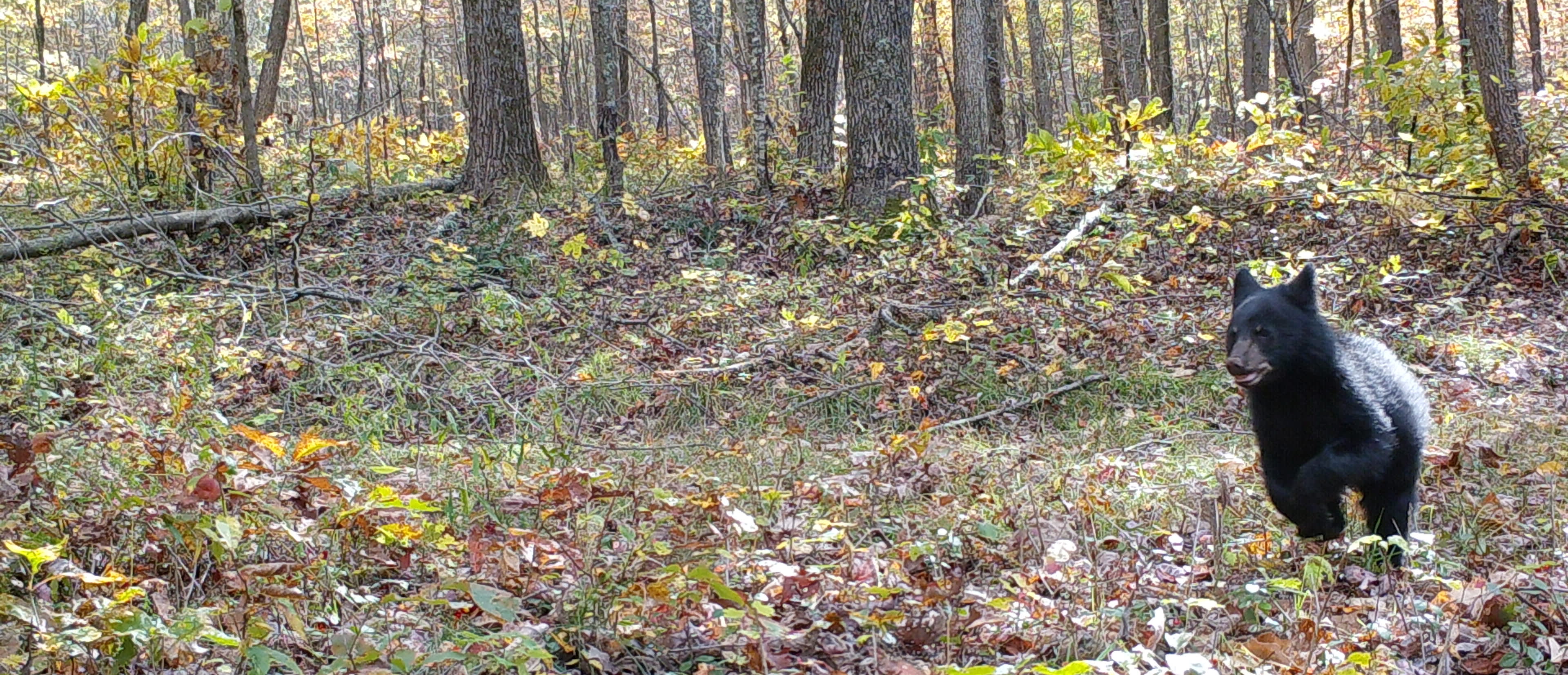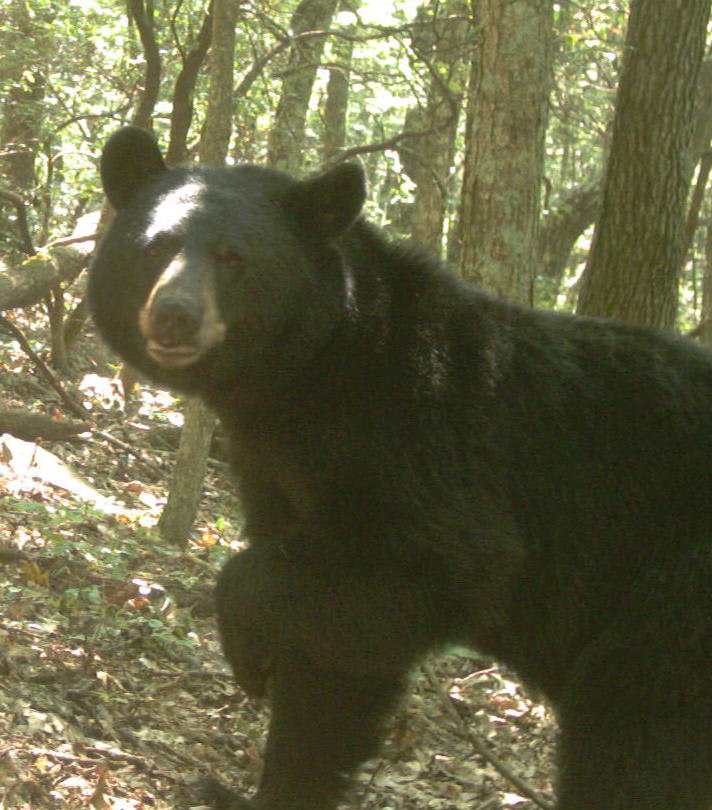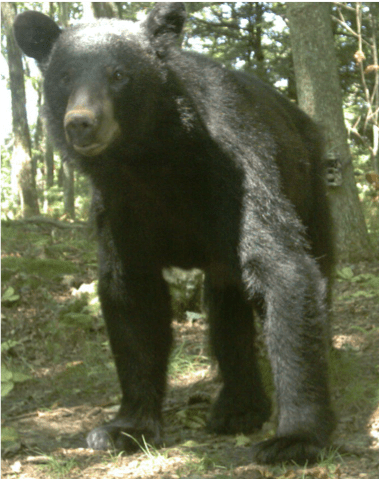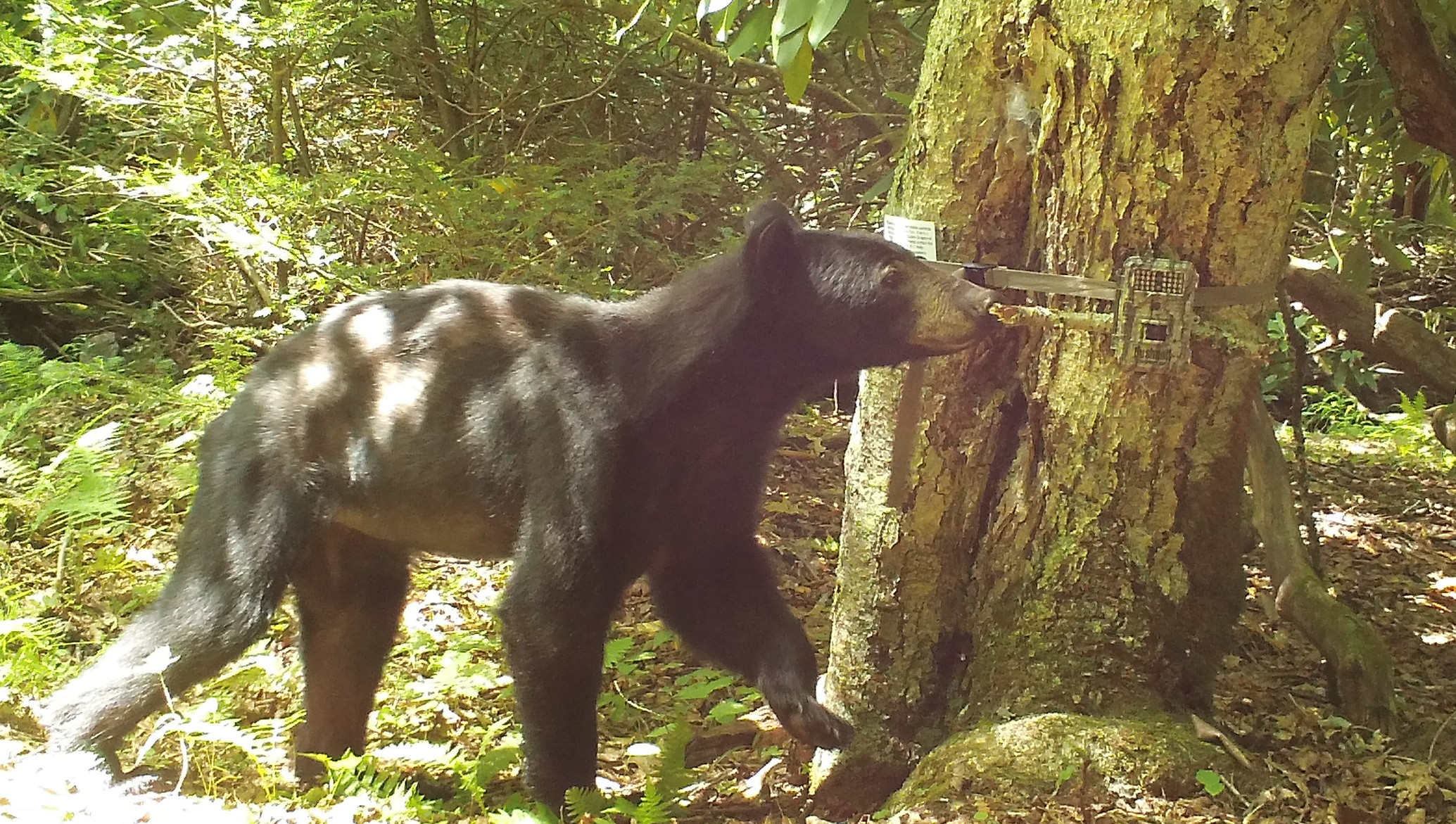This project is now in update mode. Check back regularly to see how things are progressing.
Bear’s Eye View: Cameras on black bears provide research and outreach opportunities

The Wildlife Habitat and Population Analysis (WHAPA) Lab in the Department of Fish and Wildlife Conservation at Virginia Tech uses innovative technology to study elusive, difficult-to-track wildlife species. In Virginia, a shift in the carnivore community since the late 1970s has occurred as coyotes have expanded in range and bobcats and black bears have increased in numbers. Since these shifts have occurred, we do not know much about what these species eat.

In 2018, the WHAPA Lab conducted a pilot study placing ten cameras on bear collars to record video data. Cameras recorded 20-second videos every 20 minutes during daylight hours for a total of 17.5 hours per bear over two to four months. Eight more bears were fitted with video camera collars in 2019. The fantastic video footage reveals the daily lives of black bears (see example here). With this video data, we can now more accurately determine the exact species of plants, animals, fungi, and even human-related foods that bears consume. We have already documented a wide variety of food items that change seasonally. Our study is important because the standard method of analyzing bear diet (dissecting scats or feces) can potentially be highly inaccurate since soft matter disintegrates in scats.
This pilot study was initially a side project. However, moving the camera collar project forward will require funding to enter collected data and conduct large-scale analyses to better understand black bear foraging ecology. These results will fill critical knowledge gaps in bear feeding ecology, especially immediately post hibernation in spring, and is highly relevant to predator and deer management programs in the Appalachian Mountains of Virginia.
Little is known about whether bears emerge quickly from hibernation and begin feeding immediately or whether the process occurs more slowly with multiple returns to dens. Our camera collars also take locational readings, which we can use to find bear dens, and set up trail cameras to monitor bear behavior upon emergence in spring (usually in May).
Your help is needed so we can continue to conduct critical work in the WHAPA Lab during the spring and summer of 2022. In order for this work to  proceed, we need to hire one full-time undergraduate technician who will be working with Brogan Holcombe, the lead graduate student researcher on the project. In addition, this undergraduate will also gain hands-on experience as a student researcher by learning about and being a part of the data entry and analysis processes that are essential parts of the project.
proceed, we need to hire one full-time undergraduate technician who will be working with Brogan Holcombe, the lead graduate student researcher on the project. In addition, this undergraduate will also gain hands-on experience as a student researcher by learning about and being a part of the data entry and analysis processes that are essential parts of the project.
Please consider supporting the WHAPA Lab and student research at Virginia Tech! If you have any questions about the project or about black bears and wildlife, feel free to email Brogan Holcombe at brogan@vt.edu.
To see more awesome videos check out #bearseyeview on Twitter!
$5
1/4 "Bear Day" Analyzed
Help us analyze a quarter of a day of “Bear’s Eye View” data!
$20
1 "Bear Day" Analyzed
Help us analyze 1 “bear day” of bear video data analysis: Researchers can analyze a day of data in “Bear’s Eye View” in 2-3 hours. We have a total of 10 – 18 hours of data per bear and 19 total bears work of video data!
$50
1/2 Day- Student Data Analysis
Help us fund 1/2 day of an undergraduate student technician to assist with data analysis and gaining great experience for their future careers! $11/hour x 3-5 hours a day = $77-99
$85
1 Day - Student Data Analysis
Help us fund 1 day of an undergraduate student technician to assist with data analysis and gaining great experience for their future careers! $11/hour x 7-9 hour day = $77-99
$100
5 "Bear Days" Analyzed
Help us analyze 5 “bear days” of bear video data analysis. Researchers can analyze a day of data in “Bear’s Eye View” in 2-3 hours.
$140
1 "Bear Week" Analyzed
Help us analyze 1 “bear week” of bear video data analysis. Researchers can analyze a week of data in “Bear’s Eye View” over 2-3 days.
$175
1 Terabit Hard Drive
These amazing videos require a lot of data storage - help us keep on top of data entry with a large hard drive to store all the data!
$250
3 Days - Student Data Analysis
Help us fund 3 days of an undergraduate student technician to assist with data analysis and gaining great experience for their future careers! $11/hour x 7-9 hours a day x 3 days = $231-297
$440
1 Week - Student Data Analysis
Help us fund 1 week of an undergraduate student technician to assist with data analysis and gaining great experience for their future careers! $11/hour x 8 hours a day x 5 days = $440
$600
1 "Bear Month" Analyzed
Help us analyze 1 “bear month” of bear video data analysis. Researchers can analyze a month of data in “Bear’s Eye View” over 8-12 days.
$1,760
1 Month- Student Data Analysis
Help us fund 1 month of an undergraduate student technician to assist with data analysis and gaining great experience for their future careers! $11/hour x 8 hours a day x 5 days x 4 weeks = $1,760






